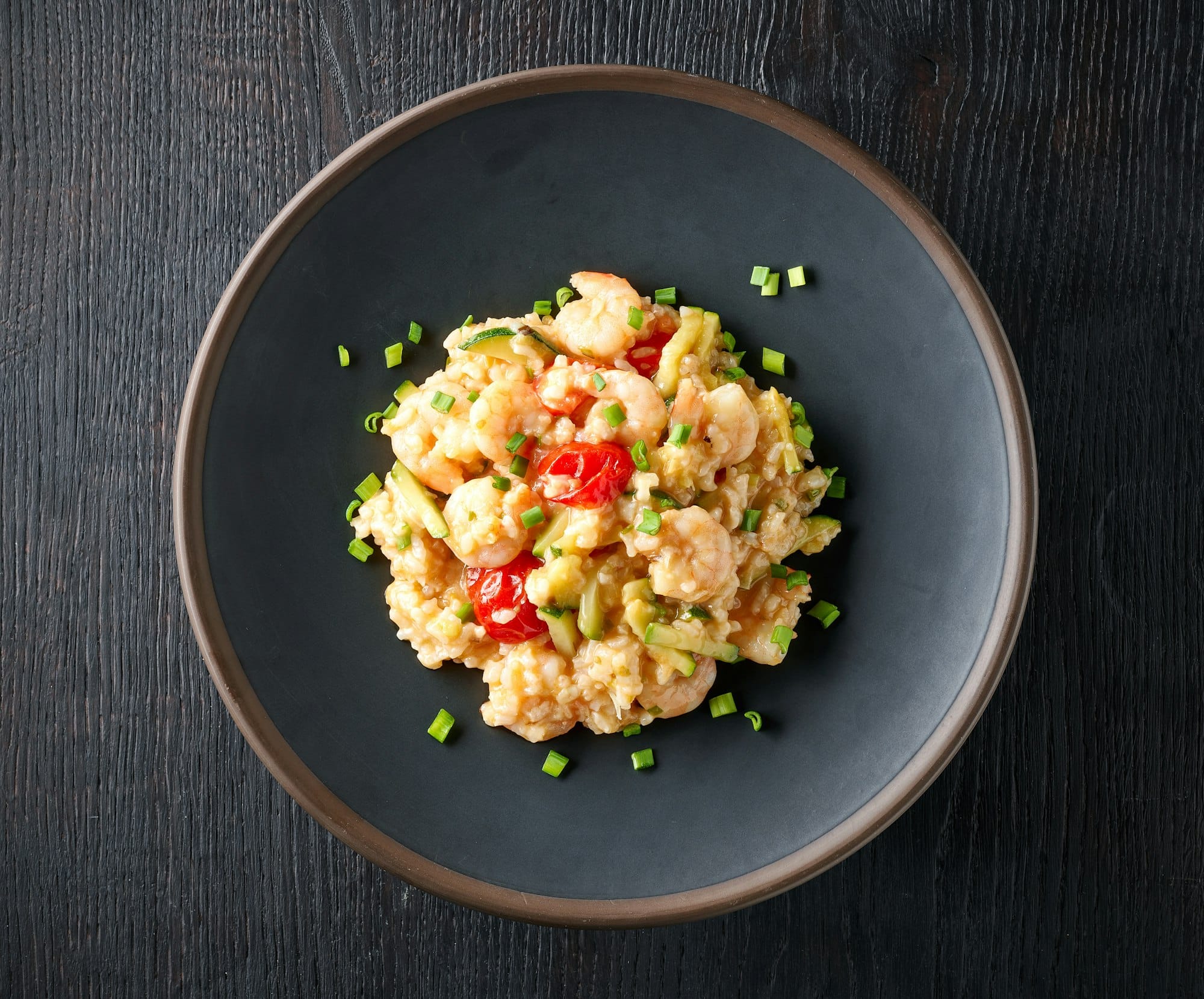What’s the Key to a Perfectly Cooked Risotto Milanese with Saffron and Bone Marrow?

A risotto is a classic staple in Italian cuisine, a dish synonymous with comfort and indulgence. But these characteristics are not achieved by chance. They are the result of a meticulous process that involves careful selection of ingredients, delicacy in the method, and, above all, patience. A perfect example of this is the traditional Risotto alla Milanese, a rich, creamy dish characterized by its vibrant saffron hue, and completed with a unique addition – bone marrow. In this guide, you will discover the key to a perfectly cooked Risotto Milanese, from the importance of choosing the right rice to the secrets behind achieving the perfect creamy texture.
Choosing the Right Rice
The success of a risotto begins with the rice. Not every type of rice can hold up to the lengthy, intensive cooking process of a risotto. The specific variety used can profoundly affect the texture and taste of the final dish.
A découvrir également : Can You Bake a Gourmet Lemon Poppy Seed Loaf with a Lavender Glaze?
Italian cuisine primarily uses three types of rice for risotto: Arborio, Vialone Nano, and Carnaroli. Arborio is the most common globally, known for its high-starch content and ability to absorb a lot of liquid. Vialone Nano, a medium-grain rice, cooks quicker and is preferred for seafood risottos. Finally, Carnaroli, deemed the "king of rices," has a higher starch content and firmer texture, ensuring a perfectly creamy risotto every time.
So, when preparing risotto alla Milanese, choose Carnaroli or Arborio rice, both of which can withstand the lengthy absorption process necessary for this dish. Remember, the correct rice type is your first step towards a beautifully creamy risotto.
A lire également : Can You Create a Gourmet Pumpkin Cheesecake with a Gingersnap Crust?
The Stock and Saffron: Flavor Keys
The stock’s quality and the addition of saffron are paramount in creating an authentic Risotto Milanese. The broth lends depth and richness to the dish, and the saffron gives it its characteristic color and flavor.
Traditionally, a high-quality beef or chicken stock is used, preferably homemade. The stock is added gradually, allowing the rice grains to absorb the flavors slowly while releasing their starch. This process forms the base of the risotto’s creamy texture.
Saffron, known as ‘oro rosso’ (red gold), is the star ingredient of Risotto Milanese. It’s responsible for the distinctive yellow color and the unique, slightly bitter taste. The saffron threads are best steeped in a little hot stock to release their color and flavor before adding to the risotto.
Remember to add the saffron-infused broth gradually, stirring constantly. This allows the rice to absorb the stock slowly, enhancing the dish’s flavor profile.
The Cooking Process: Patience is Key
The cooking process of risotto requires patience and constant attention. The rice must be sautéed with butter and finely chopped onions until the grains are translucent – a critical step called "tostatura."
Next, add a splash of white wine. Wait for the rice to absorb the wine entirely before you start adding the saffron-infused stock, ladle by ladle, while keeping the heat at a steady simmer. It’s essential to wait for the rice to absorb each addition of stock fully before adding the next.
The whole process should take around 18 minutes. Remember, the goal is to achieve a creamy texture with grains that are cooked yet retain a slight bite – a state known as "al dente."
The Finishing Touches: Butter and Bone Marrow
The final steps in preparing a risotto are vital as they contribute to the dish’s creamy texture and rich flavor. Once the rice is cooked, remove from heat and add a generous helping of butter. This process, known as "mantecatura," results in a rich, creamy texture.
Now, for the signature part of Risotto Milanese – the bone marrow. As the risotto rests for a couple of minutes, sauté bone marrow in butter until it’s melted and golden, then stir it in. The bone marrow adds a layer of richness and a depth of flavor that elevates the dish from great to extraordinary.
The Importance of Serving
The presentation is equally crucial in achieving a perfect Risotto Milanese. A well-cooked risotto should be creamy, not runny or stiff. It should spread slowly if you tilt the plate, a characteristic known as "onda" or wave.
Always serve risotto immediately. The starches in the dish begin to tighten up as it cools, altering the texture. So, the moment your risotto is ready, dish it up and enjoy the fruits of your labor. Remember, the perfect risotto is one where the care in each step of the process shines through in each bite.
Incorporating Cheese and Wine: Enhancing Flavor and Texture
When making a risotto alla Milanese, it’s not just the rice, stock, saffron, and bone marrow that play essential roles. Two other key ingredients – white wine and Parmesan cheese – contribute significantly to the flavor and texture of the dish.
Before adding the saffron-infused stock, a splash of white wine is poured into the pan. This deglazes the bottom of the pot, lifting any flavorful bits stuck to the bottom, and imparts an acidity that balances out the richness of the dish. The wine should be dry, and of good quality – remember, if you wouldn’t drink it, don’t cook with it! The rice should be allowed to fully absorb the wine before the stock is added, allowing the alcohol to evaporate and the flavor to concentrate.
Parmesan cheese, specifically Parmigiano-Reggiano, is introduced at the end of the cooking process. Grated Parmesan is stirred into the risotto during the "mantecatura" stage, along with butter. The heat of the risotto melts the cheese, adding to the creamy texture. It also provides a umami depth that perfectly complements the flavors of the saffron and bone marrow. A good rule of thumb is to add about a quarter of a cup of grated Parmesan for every cup of uncooked rice.
The Perfect Saffron Risotto: A Balanced Symphony of Flavors
Crafting a perfectly cooked risotto Milanese with saffron and bone marrow is a labor of love that requires high-quality ingredients, the right techniques, and, above all, patience. The journey begins with selecting the appropriate rice – Carnaroli or Arborio – that can withstand the lengthy absorption process and contribute to the creamy texture.
The stock and saffron threads bring a depth of flavor and characteristic hue, while the addition of white wine provides an acidic balance. The ritual of "tostatura" and slow addition of stock require constant attention, leading to a risotto that is creamy, but where each grain retains a slight bite.
The final touches of butter and bone marrow during the "mantecatura" stage further enhance the creaminess and richness of the dish. The inclusion of Parmesan cheese introduces a savory note, rounding off the flavors.
Serving the dish immediately ensures the risotto maintains its ideal texture. Its creaminess, the slight bite of the rice, the depth of flavor from the saffron and marrow, the balancing acidity from the wine, and the umami from the Parmesan, all interact in a harmony of flavors and textures that is the hallmark of a perfectly cooked risotto alla Milanese. Remember, the perfect risotto is not just a dish – it’s an experience, meticulously crafted, savored with every bite.
